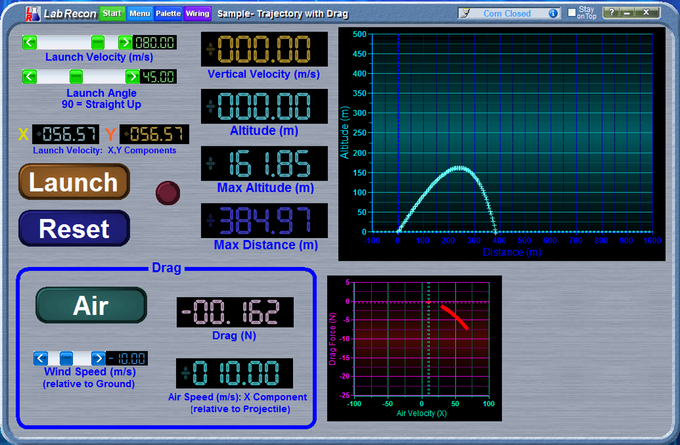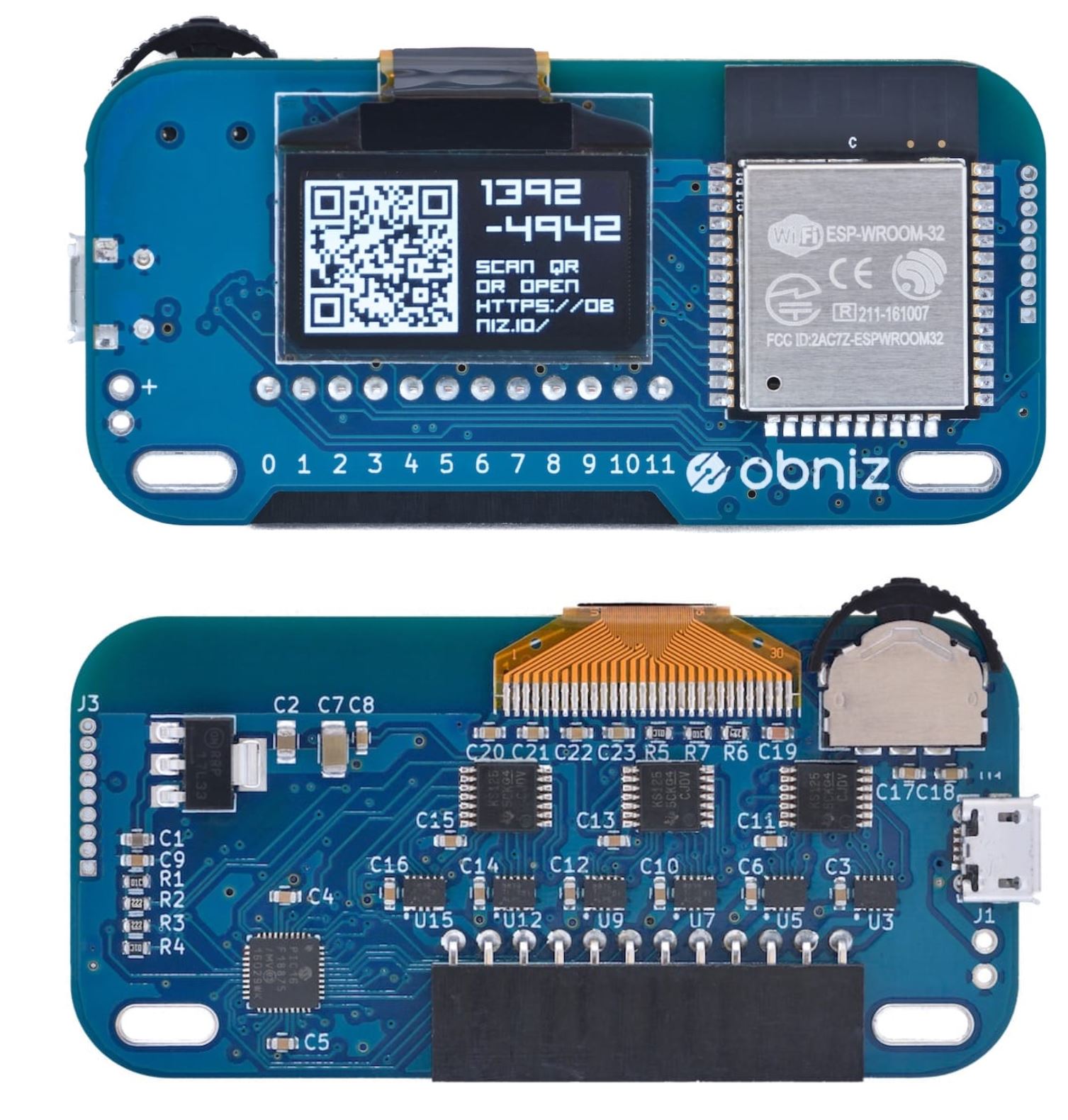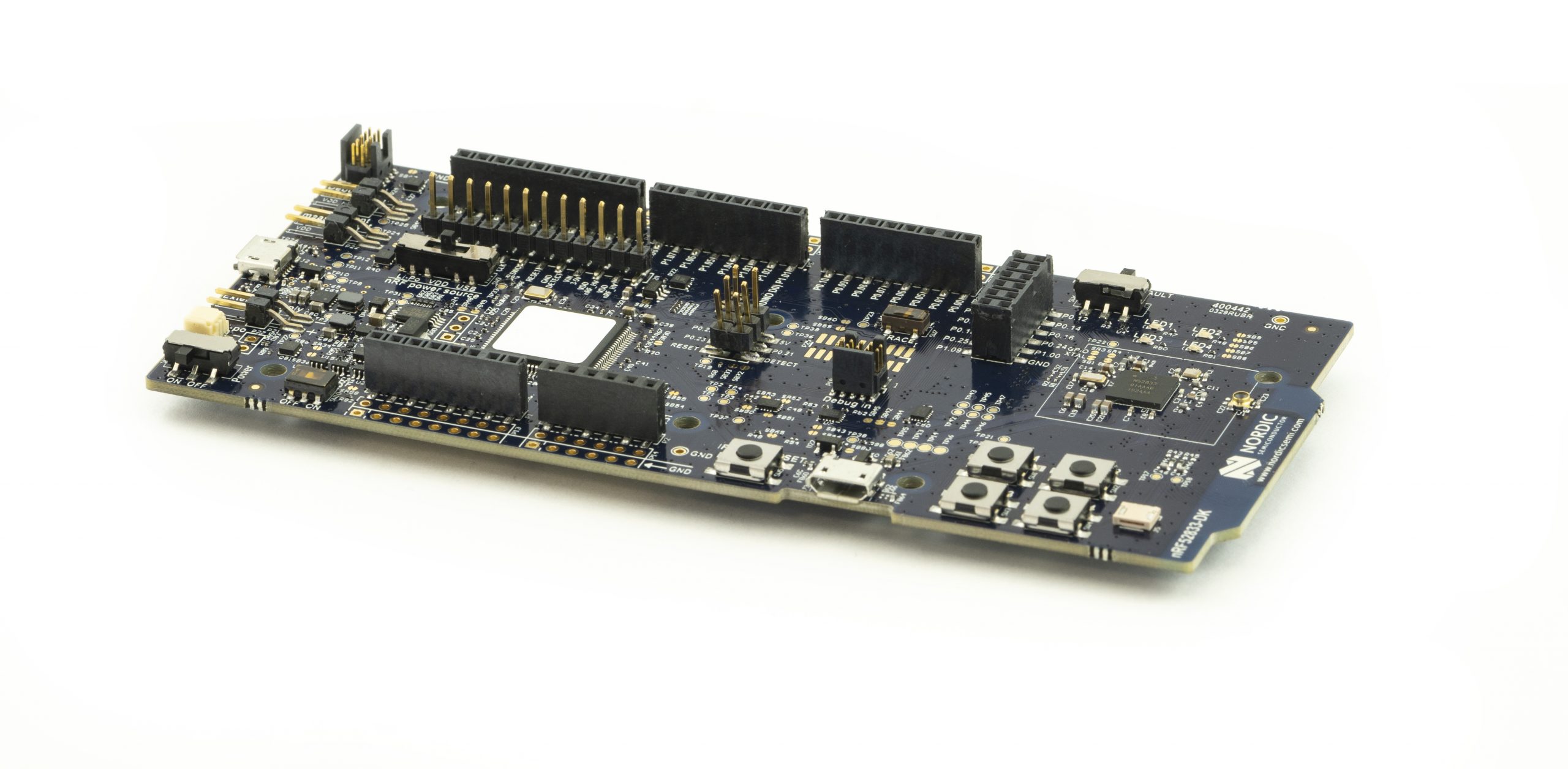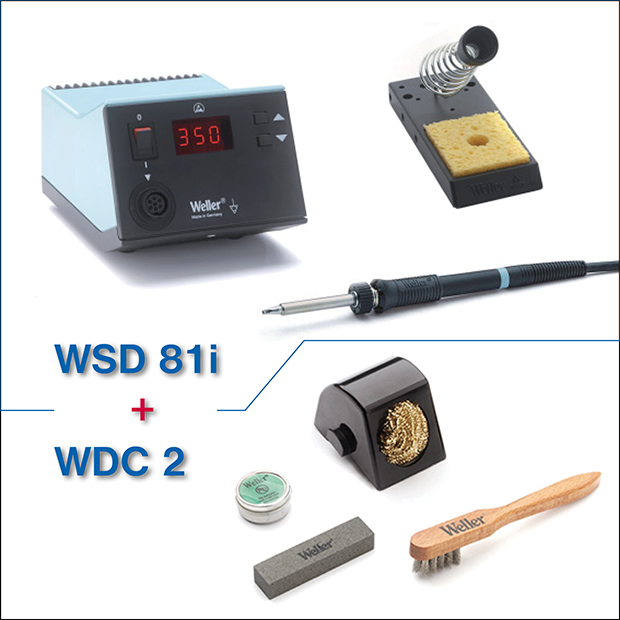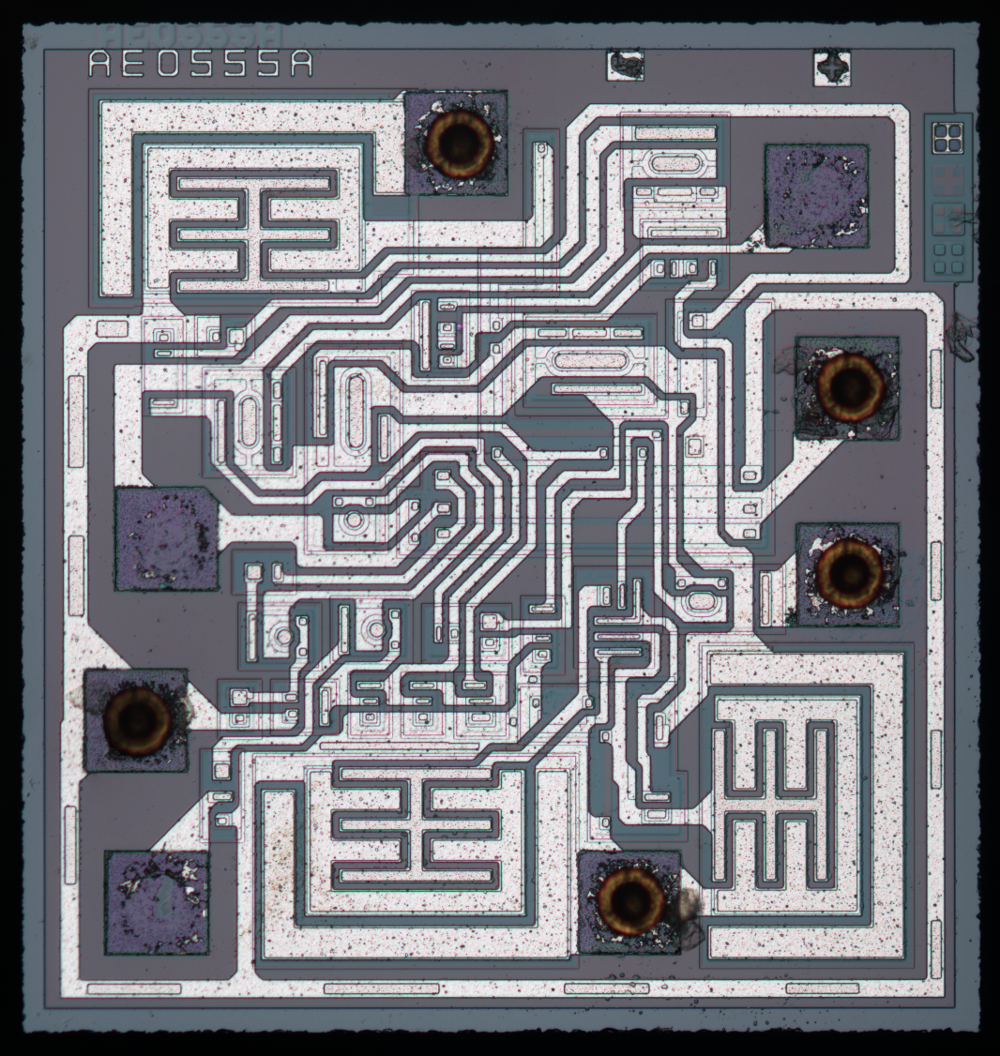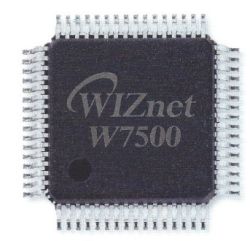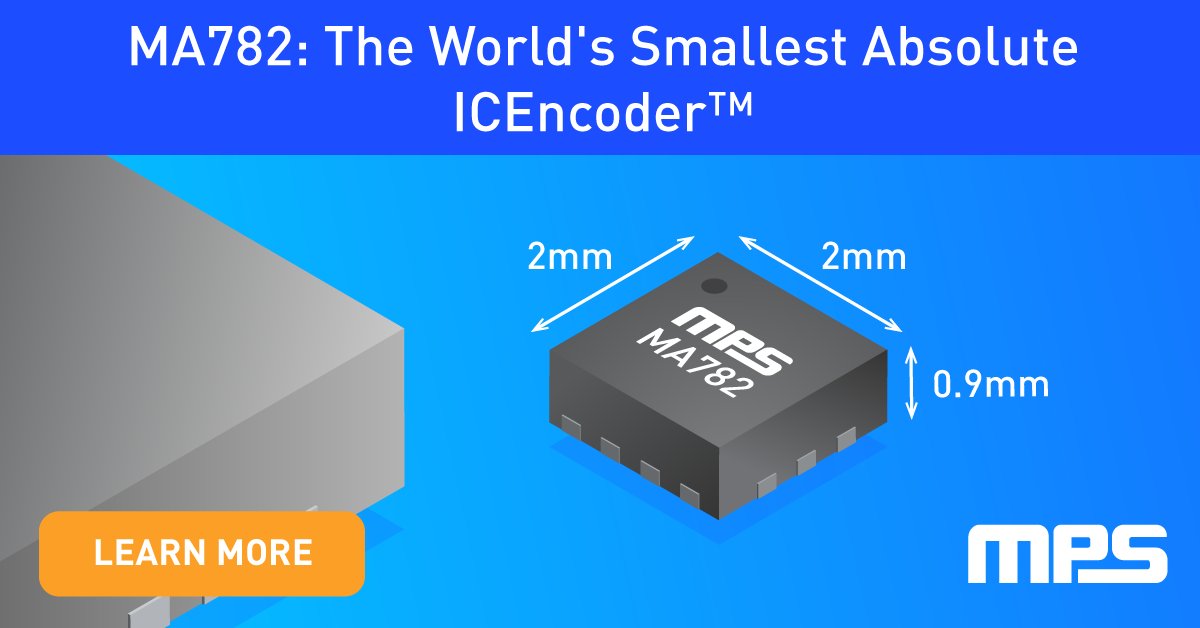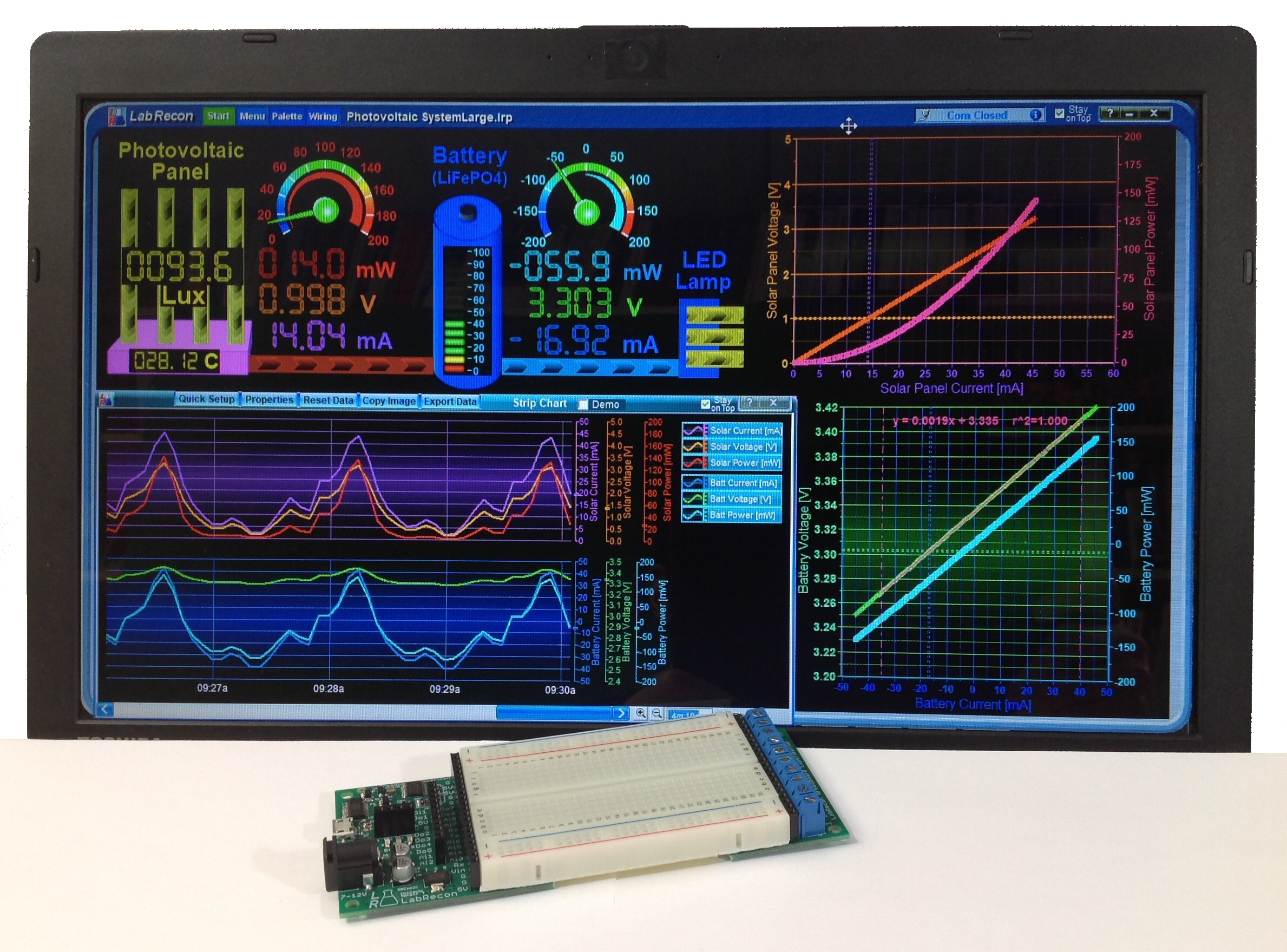
LabRecon allows one to build rich graphical interfaces for “remote” IoT (Internet of Things) or “local” measurement and control applications. A drag-and-drop panel builder and graphical “Wiring” programming environment allows one to easily build an interface and create the operating logic for any project. This operating logic can be further expanded using the “code link” interface to text based languages such as Python, Java, C#, Visual Basic, etc. A USB connected “Breadboard Experimentor” circuit board or LabRecon chip provides the measurement and control link.
One powerful feature is the “Measurement Wizard”, wherein one can choose from a built-in database of over 500 commercially available sensors to automatically configure sensor configurations. The wizard will further present circuits with component values for voltage and current measurements.
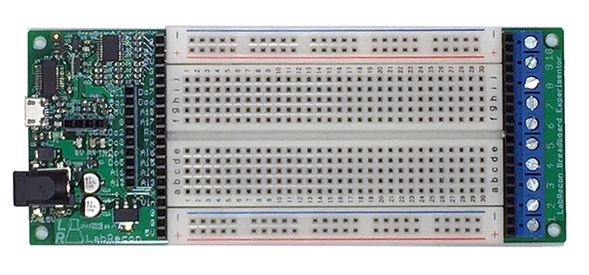
The “Breadboard Experimentor” includes an on-board LabRecon chip, which provides many I/O options including 8 12-bit analog, frequency and digital inputs. Outputs comprise PWM, servo, frequency and stepper motor signals. Pins can also be configured to support 24-bit ADCs, 12 or 16-bit DACs and port expanders.
The LabRecon Breadboard Experimentor allows LabRecon to interface to the real world. The device can be configured to realize various combinations of the following:
- 8 Analog Inputs (12-bit, 0 to 5V)
- 1 Count/Frequency Input
- 1 Quadrature/Frequency Input Pair
- 7 Digital On/Off Inputs/Outputs
- 4 PWM Outputs
- 4 Servo Outputs
- Outputs for 2 Stepper Motors
- I2C interfaces for 24bit ADCs, 12/16bit DACs, port expanders
LabRecon also comprises a server to allow access of the GUI that one builds by computers or mobile devices. Furthermore, emails and text messages can be sent periodically or upon events. The server also includes a MQTT broker to allow MQTT clients to share data with the software.
The project will launch on kickstarter and needs your feedback now. The campaign is going live on May 15th and will last 45 days.





